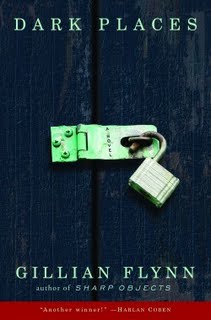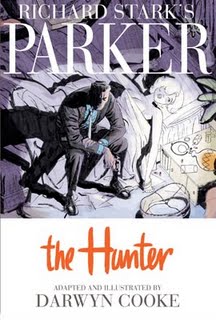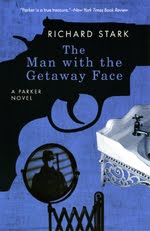Movies: Programming Reminders
An alert to all noir fans. Turner Classic Movies is turning over its primetime line-up this evening to the work of director Phil Karlson. After kicking around Hollywood for years in a variety of roles including gag writer for Buster Keaton, Karlson made his reputation in the 1950s with a series of hard-hitting crime dramas.
TCM leads off with Scandal Sheet, based on a novel by Sam Fuller. It’s a wild one. I saw it earlier this year at Noir City. Next up is The Phenix City Story, a brutal small-town exposé that pulls no punches. The night wraps up with the gangster drama The Brothers Rico and the burlesque musical Ladies of the Chorus, featuring an early performance by Marilyn Monroe. Karlson Fest begins at 8PM Eastern, 5PM Pacific.
While I’m at it, I’ll also point out that on Monday, October 5 TCM has scheduled a mini-marathon of films from The Whistler series starting at 6AM Eastern, 3AM Pacific. Sadly, only six of the eight titles will air, with two of the better entries – Mark of The Whistler and The 13th Hour – going missing. Still, it’s a rare chance to see these odd, haunting movies on TV. Set those DVRs.
For more on the Whistler films, read my pointlessly exhaustive coverage.
Friday, September 25, 2009
Wednesday, September 23, 2009
Movies: Shadows of The Thin Man
Quick – who kills who in The Thin Man?
Yeah, I never remember either. That’s not Dashiell Hammett’s fault. As two recent Mystery*File pieces observe, the plot is certainly solid enough. But it’s the barrage of booze-fueled badinage between Nick and Nora Charles, played in the 1934 film and its five sequels by William Powell and Myrna Loy, that gives the story its kick.
The blend of comedy, mystery and romance developed by Hammett proved so successful that plenty of similar movies were made. Without planning to – I don’t really plan anything – I recently watched three of them.
The Ex-Mrs. Bradford (1936) tries to recapture the Thin Man magic in the most obvious way by casting Powell as a society doctor who has split from mystery writer spouse Jean Arthur. There’s still clearly a spark between them, and it’s fanned when Powell is implicated in a race track murder.
Bradford, alas, is a dud; in the interests of full disclosure, I confess to liberal use of the fast-forward button, mainly to get to a wrap-up that makes up in ingenuity what it lacks in plausibility. Part of my problem is that I’m not really a Jean Arthur fan. When I see her I think she’s Gracie Allen, and when I realize my mistake I am invariably disappointed. The movie does feature Eric Blore in one of his 77 performances as a butler. Only 49 more to go.
1938’s The Mad Miss Manton teamed up Barbara Stanwyck and Henry Fonda three years before their legendary pairing in The Lady Eve. Stanwyck plays the proto-Paris Hilton, a socialite and leader of the “Park Avenue Pranksters” regularly derided as frivolous in the press. When she claims to have discovered a dead body that then disappears, newspaper editor Fonda makes it his mission to discredit her. The plot barely hangs together, but at least amateur sleuth Stanwyck makes her share of mistakes. The sight of seven women in furs blundering around crime scenes has its own rewards. For a frothy movie it has a dark palette, no surprise considering that it was filmed by future noir master Nicholas Musuraca. His photography adds some genuine menace to a subway-set climax.
The Princess Comes Across (1936) strikes the perfect balance of elements. Carole Lombard plays the title role, a member of Swedish royalty bound on a cruise ship for her Hollywood debut. Also on board is womanizing bandleader Fred MacMurray (he sings!), a blackmailer, an escaped murderer, and a quintet of internationally renowned detectives (including Sig Ruman and Mischa Auer). Lombard sends up Greta Garbo beautifully, particularly once it’s revealed early on that Princess Olga is actually Brooklyn’s own Wanda Nash, desperate for a break.
I’m kicking myself for missing another example of the form, 1938’s There’s Always A Woman, with Melvyn Douglas and Chez K favorite Joan Blondell from a story by Manton’s Wilson Collison. Ed Gorman and Ivan at Thrilling Days of Yesteryear recommend it, which means I’ll scour the TCM listings for the next airing.
Sunday, September 20, 2009
Miscellaneous: All Thumbs Up
Making up for the paucity of recent posts with a slew of recommendations.
Noir City Sentinel. The latest issue of the house rag of the Film Noir Foundation is now available. This edition has several articles on director André de Toth, a roundup of some recent noir films, an appraisal of actor/wild man Timothy Carey, and more. Go. Give. Get. Dark Places, by Gillian Flynn (2009). Libby Day is the sole survivor of the “Satan Sacrifice of Kinnakee, Kansas,” and it’s her testimony that sent her metal-obsessed brother Ben to prison for butchering their mother and two sisters. More than twenty years later, Libby has milked the tragedy dry. Desperate for cash, she agrees to investigate the murder on behalf of the Kill Club, a group of obsessives certain she got everything wrong.
Dark Places, by Gillian Flynn (2009). Libby Day is the sole survivor of the “Satan Sacrifice of Kinnakee, Kansas,” and it’s her testimony that sent her metal-obsessed brother Ben to prison for butchering their mother and two sisters. More than twenty years later, Libby has milked the tragedy dry. Desperate for cash, she agrees to investigate the murder on behalf of the Kill Club, a group of obsessives certain she got everything wrong.
Some of the final plot turns strain credulity, and Flynn has a thing for coining hyphenated words. On a single page, Libby trance-drives past dusk-black elevators that she views with kitten-round eyes. This koala-cute authorial tic can be cough-syrup-cloying, but it’s a small price to pay for a supple voice that bounces between past, present and three distinctly different viewpoints to tell a haunting story of lives teetering on the precipice of disaster long before any blood is shed.
The Ancient Rain, by Domenic Stansberry (2008). An elegiac Shamus Award nominee. Ex-cop and ex-spook Dante Mancuso is drawn into an investigation of a 1970s bank robbery staged by political activists, reawakened by and filtered through the paranoia of the months after September 11. Stansberry nails the mood of 2002 perfectly, as well as Dante’s sense of bearing witness to the slow-motion demise of San Francisco’s Italian community. The Jerusalem File, by Joel Stone (2009). Europa Editions delivers again, with this posthumous novel by Pulitzer Prize nominee Stone. Retired Israeli state security agent Levin finds himself working as a private investigator when a sort-of friend asks him to shadow the wife he’s sure is being unfaithful. Again, the voice is the draw here, combining the world-weariness of Le Carré with the vinegar of Simenon. Or, to put it another way, it’s a tale told by God if He were in fact George Sanders. (For the record, that’s a universe I want to live in.) This brief novel is one of the best of the year.
The Jerusalem File, by Joel Stone (2009). Europa Editions delivers again, with this posthumous novel by Pulitzer Prize nominee Stone. Retired Israeli state security agent Levin finds himself working as a private investigator when a sort-of friend asks him to shadow the wife he’s sure is being unfaithful. Again, the voice is the draw here, combining the world-weariness of Le Carré with the vinegar of Simenon. Or, to put it another way, it’s a tale told by God if He were in fact George Sanders. (For the record, that’s a universe I want to live in.) This brief novel is one of the best of the year.
The Informant!, (2009). Proof that Hollywood does sometimes get it right. When I read Kurt Eichenwald’s book, I felt that he didn’t grasp how truly bizarre – and funny – the material was. But Steven Soderbergh, writer Scott Z. Burns and company certainly do, nailing a tricky tone from the outset. Burns’ adaptation is a marvel, deploying voiceover to great effect and paying it off at the end. Extra points for the score by Marvin Hamlisch, the pride of Queens College.
Tuesday, September 15, 2009
Movie: Shield for Murder (1954)
The best film criticism compels the reader, through idiosyncratic perspective and felicitous turns of phrase, to seek out a movie destined to disappoint. To wit, from Dark City: The Lost World of Film Noir by my friend Eddie Muller:
While THE PROWLER is subtle and complex, unwinding with a seductive rhythm, SHIELD FOR MURDER is a drum solo by a club-footed spastic.
Brother, I am in.
And I’m not even that big a fan of The Prowler, a movie more interesting to think about than to watch. But the comparison made Shield for Murder a must-see.
Edmond O’Brien (who co-directed) is Detective Barney Nolan. Not bent but broken, cracking under the strain of too many hard hours for too little pay, Barney’s decided to make his move. He’s going to off a bookie, pinch his roll, and light out for suburbia with his girl. All he’s got to do is hoodwink his protégé. And handle a deaf-mute witness. And deal with his own lousy luck.
Not exactly new ground, that story (from a novel by William P. McGivern). Still, it’s fertile B-movie terrain. Yet Shield limps out of the gate, inert from the first frame and devoid of suspense. It was clearly shot on the cheap; the opening sequence features the most egregious traveling boom shadow I’ve ever seen, and I’ve seen plenty.
Marla English as Nolan’s girl is easy on the eyes but hard on everything else. John Agar is, well, John Agar-like playing Nolan’s partner. The usually reliable O’Brien must have read all those press clippings singling out his ability to convey sweaty desperation. Nothing else would explain the directorial choice to include multiple close ups of O’Brien looking sweaty and desperate. The grace notes come courtesy of a well-filmed shootout at a crowded high school pool and a few familiar faces in the supporting roles, most notably a blonde Carolyn Jones in the movie’s best scenes as a brave-face barfly.
Verdict: I’m with Eddie. At least now I can cross "experience drum solo by club-footed spastic" off my bucket list.
Sunday, September 13, 2009
Miscellaneous: Vamping
Sorry, kids. Multiple deadlines and big plans have me jumping. Standard operating procedure would be to post the video for “Crucifed” by Army of Lovers – you know, the band featuring my first wife, my half brother Nils, and the guy who handles my landscaping, and I ain’t talking about yard work. But the geniuses at MTV Music have taken their copy down, and once you go digital you never go back. (For you completists, here’s the considerably less crisp YouTube version.)
These days the last refuge of a scoundrel is his Twitter feed. So why not read this excellent interview with Walter Hill, one of my filmmaking heroes? Or play Little Wheel, a beautiful (and short) Flash game featuring a great soundtrack? Real posts coming soon.
Monday, September 07, 2009
Sort Of Related: Richard Stark Edition Effective may not sound like the highest compliment. But it is in the world of Parker, the professional thief created by Donald E. Westlake under the pen name of Richard Stark.
Effective may not sound like the highest compliment. But it is in the world of Parker, the professional thief created by Donald E. Westlake under the pen name of Richard Stark.
And the new graphic novel adaptation of The Hunter by Darwyn Cooke is brilliantly effective. Cooke’s clean, dynamic art, rendered with a sharp eye for early ‘60s detail, suits Stark’s stripped-down prose perfectly. The result is the best interpretation of the character to date, and that includes the two cinematic versions of this book. It’s a potent moment when Parker finally raises his face to a mirror and we see his grim Jack Palance mug. But it’s the blank eyes of the wife who betrayed Parker and left him for dead that fully reveal the power of Cooke’s style. Reading the comic triggered a hunger for Stark in pure form so I read the second entry in the series, 1963’s The Man with the Getaway Face. (Cooke’s take on this book will be published next summer.) Parker’s gotten plastic surgery after the events of The Hunter. Desperate for cash, he signs on for a heist that he already knows comes with a double-cross. His only hope is to beat his supposed partner to the punch. But there are unexpected complications, including one involving Parker’s new look. Do I even have to tell you it’s good?
Reading the comic triggered a hunger for Stark in pure form so I read the second entry in the series, 1963’s The Man with the Getaway Face. (Cooke’s take on this book will be published next summer.) Parker’s gotten plastic surgery after the events of The Hunter. Desperate for cash, he signs on for a heist that he already knows comes with a double-cross. His only hope is to beat his supposed partner to the punch. But there are unexpected complications, including one involving Parker’s new look. Do I even have to tell you it’s good?
Elsewhere, critic Paul Matwychuk goes on a Parker roll, watching three movies about the character in a row.
Saturday, September 05, 2009
Movie: Manhandled (1949)
In the annals of film noir, surely no actress has made a greater impression than ... Dorothy Lamour?!?
Hope and Crosby would be shocked to find Dottie on The Road to Ruin in this not-on-video rarity. Alan Napier, Alfred the Butler on TV’s Batman, looms Easter Island-like over the rest of the cast as a writer – the right kind, he thinks, not one of those blasted pulpsters – plagued by recurring dreams in which he murders his jewelry-bedecked unfaithful wife. He visits the office of a psychiatrist, where Dottie works, to figure out what these dreams might mean. Guess what happens next.
Manhandled is the Patient Zero in an epidemic that has infected many contemporary thrillers. It suffers from ELS: Everybody’s Lying Syndrome. No one in this movie is on the level with the exception of Sterling Hayden, who turns up half an hour in as an insurance investigator (and is the only person who comes close to Napier in the height department). Even our Dottie stretches the truth to the breaking point. Once you realize you can’t trust any aspect of the story, the whole enterprise starts to feel insubstantial.
In another ahead-of-its-time trope, each supporting player is given a specific bit of business to define his character, which is promptly run into the ground. This does, however, set up one of the lamest comic closing scenes in film history. Oh, and the cops behave like idiots throughout.
So why did I like this movie? Two words: Dan Duryea. Sporting an unholy combination of loud bowtie, dark shirt and sweater vest, he’s at his sleazy best playing a shady-cop-turned-shamus. (And yes, he slaps Dorothy Lamour.) Duryea topped off his tank of ingratiating smarm for this one, and his engine keeps running long after the rest of Manhandled has gone into a ditch.
Friday, September 04, 2009
On the Web: More Playboy’s Penthouse
What say we kick off the holiday weekend with a little music? These clips will give you a sense of the variety show I wrote about yesterday, and spare you the indignity of looking up Playboy’s Penthouse online. Safe search, my ass. My computer may never forgive me.
First up in Hef’s pad is Frances Faye, one of the premiere nightclub entertainers of the era. Listen to her album Caught in the Act and tell me I’m wrong. With the awe-inspiring Jack Costanzo, aka “Mr. Bongo.” Part one is below, and here’s the rest.
You can also enjoy the folk duo Bud & Travis in the first of three parts. Playboy’s Penthouse booked a range of artists – jazz, cabaret, folk – and let them perform several songs in a mini-concert that provided a real flavor of their shows. Better than the band doing one number before the infomercials start.
Thursday, September 03, 2009
DVD: Playboy’s Penthouse
The first lesson learned from watching two episodes of Hugh Hefner’s 1959-60 variety show while waiting for the next Mad Men to air: hipsters actually talked like, you know, hipsters, man. Lenny Bruce even snaps his fingers during his patter, like he’s covering for the bongo player who’s busy chatting up some broad.
Playboy’s Penthouse is one strange program. The idea is we’re attending a party at Hef’s title pad. There are camera glitches galore – get that girl outta there! – compounded by the fact that the guests are downing actual cocktails. Hef tackles the dual roles of interviewer and master of ceremonies when he’s not qualified for either one. He clings to his pipe for dear life throughout. The pilot has the feel of a shakedown run, the show structured along the lines of an issue of the magazine. A truncated segment on a newfangled kitchen-in-a-cabinet comes off like a lifestyle piece that you’d page past.
I appreciate Lenny Bruce’s role in the history of comedy, but I’ve never found him funny. His appearance as the first guest did make the show feel like a party, in that I wanted to wander off, refill my glass and inspect the host’s medicine cabinet.
But the oddness of the conceit only adds to the fascination of these shows. Nat King Cole drops by and doesn’t sing. He just ... hangs out. Rona Jaffe talks about writing The Best of Everything and it manages to sound like a genuine conversation.
The musical segments are where the shows really lift off. Cy Coleman, who composed the now-famous “Playboy’s Theme,” performs “You Fascinate Me” with a centerfold at his side and it turns into a spry, sexy, little horn-rimmed number. Sammy Davis Junior does an electrifying set.
There’s talk about the Playboy philosophy, which apparently revolves around having a good hi-fi. To be fair, Hef does a fine job of explaining it in an accompanying 2006 interview. It boils down to figuring out who you want to be, then pretending to be that person until you are that person. Turns out I’ve been following Hef’s lead for years without knowing it. I’m here to say his approach works surprisingly well.
These shows are a time capsule of a moment when popular culture was broader. Jazz and theater were common currency, proven in a Teddi King novelty song that assumes a familiarity with Tennessee Williams and William Inge. I’m happy to meet someone who knows Brandon Inge. They also capture the last instants before hip became cool. Hip was adult. Cool is adolescent. Hip, as exclusionary as it was, at least rewarded effort. You had to work to find the cutting edge stuff, and then act as if you hadn’t tried. Cool only focuses on that last part.
The rest of the shows in this collection are from Playboy After Dark, Hef’s 1969 variety series. Only ten years had passed, but it was a completely different era. I’ll watch the later shows, but I doubt I’ll find them as interesting.
UPDATE: I dig up some clips from the show here.